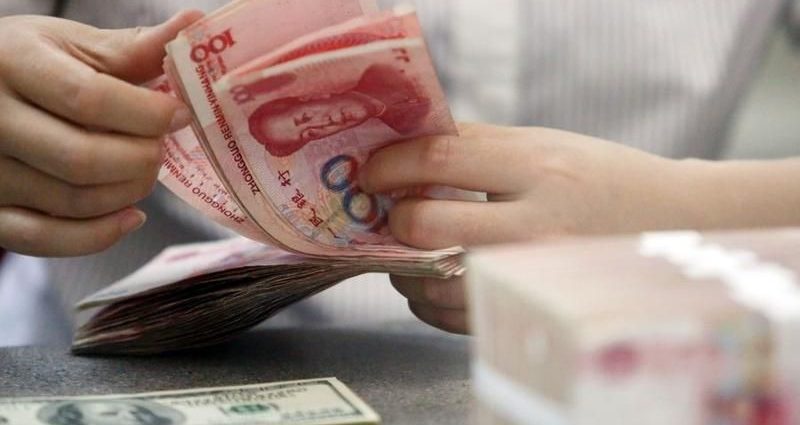
SHANGHAI: China’s yuan weakened past the psychologically important 7 per U.S. dollar level for the first time in two years on Friday, pressured by a buoyant dollar and strong market expectations for an even more aggressive U.S. interest rate hike next week.
The yuan had only breached the 7 mark twice since the global financial crisis of 2008. Crossing the level could stoke fear of capital outflows just as authorities want to marshal resources to revive an economy reeling from COVID-19 outbreaks and a weak property market.
The onshore yuan breached the level in early trade. It was at 7.0142 per dollar as of 0314 GMT, in a catch-up move with its offshore counterpart, which crossed the key threshold during European hours on Thursday. The offshore yuan last traded at 7.0259.
Prior to the market open, the People’s Bank of China (PBOC) set the yuan’s midpoint rate at 6.9305 per dollar, 204 pips or 0.3% weaker than the previous fix 6.9101.
The sizable loss in Friday’s midpoint fixing indicates the central bank might have allowed the yuan to cross the 7 per dollar mark, said Ken Cheung, chief Asian FX strategist at Mizuho Bank.
“As long as the pace of depreciation is not too fast and remains under control, it should be fine.”
Several currency traders said they now see 7.1 to 7.2 per dollar as their next target, while 7 has turned into a resistance level, as broad dollar strength in overseas market should continue to weigh on most emerging market currencies.
Official data showed overseas investors cut holdings of Chinese bonds for a seventh consecutive month in August, discouraged by the weakening yuan and widening yield differentials with the United States.
On the economic front, factory output and retail sales growth surprised on the upside in August, shoring up the shaky recovery from the crippling effects of COVID curbs and heatwaves, but a deepening property slump weighed on the outlook.
“Policymakers are responding to these headwinds by rolling out more support measures … But we doubt it will be enough to restore confidence and revive depressed credit demand,” said Julian Evans-Pritchard, senior China economist at Capital Economics.
“As a result, economic momentum is likely to remain weak heading into 2023.”
However, earlier on Friday several state media outlets published commentaries on the yuan that sought to stabilise market expectations and played down any significance of the key 7 level.
State broadcaster CCTV cited the foreign exchange regulator as saying the yuan’s performance was much better than most other currencies over the past year.
The yuan has lost nearly 10% of its value versus the dollar so far this year, though against currencies of China’s major trading partners it has slipped only about 0.4%.
“Seven was basically just this psychological level that people were looking at, and the market was definitely more focused on (it) than the PBOC from a policy perspective,” said Galvin Chia, emerging markets strategist at NatWest Markets.
“It’s clear that in this round, there hasn’t actually been a push back at a specific level, like a defence at a certain level. It’s just pushing back on the weakness.” (Reporting by Asian bureaus; Editing by Muralikumar Anantharaman and Kim Coghill)

